Uncertain times! These days have the entire world off balance and uncertain of the future. There is no better time than now to start saving money.
Permaculture by definition is the very essence of saving money. Everything about permaculture speaks to sustainability and proper use of resources. It might take longer but it is possible to practice permaculture with no money at all.
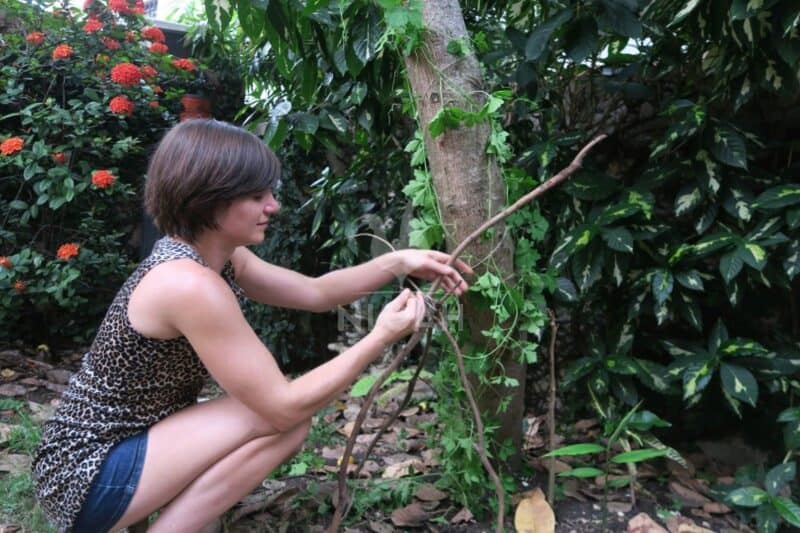
Let’s talk about how we can save both in our own food source, and also in how to save by changing a few ways on how we live.
If you have the money then you can certainly speed up the process. You can purchase all you need to establish a sustainable food forest. Even if you have the money to create your vision, you will still want to get the best deal for your dollar. Let’s get the most value out of our permaculture gardens. We only have to adapt a little bit by applying a little work and by using our imaginations.
The best thing is to start right from the beginning. We can cover as many common sense savings by making a list and going through it. Ask yourself these three questions.
- What do we need?
- How much does it cost?
- How can we be creative, and reduce or eliminate the cost?
1. Soil
Instead of buying your soil from a nursery, you might want to rent or borrow a truck and take a drive to the country side. You will find feed lots, ranchers and farmers often sell their nitrogen rich soil created from the cleaning out of barns and stalls. This is a much cheaper way of purchasing good quality soil.
2. Fertilizer
Purchasing fertilizers can be very expensive. The best way to avoid the big expense of enriching your soil, is to create your own fertilizer. Don’t throw out your veggie scraps turn them into nutrients for the soil by composting.
Learn how make a compost tea. You will not only be recycling, but also saving a big hit on your pocket book. When you do start putting in trees plant nitrogen fixing trees, shrubs and ground cover plants. They will provide free fertilizer.
3. Trees
Buying the right trees can also be an expensive process. There are many variables like the age of the tree, mature trees are very expensive in comparison with young saplings. Again this is just a time issue.
The best times to buy from your local nursery will early spring, and even better, late fall. It is always a good idea to watch very carefully the prices on the trees you need. They can fluctuate quite a bit.
Look in your area for tree farms, the nurseries are getting most of their trees locally. They will be buying from tree farms or greenhouse suppliers. Do a bit of research and go direct to the source. You can save a lot by doing your homework.
4. Shrubs
The same factors that elevate the cost in buying trees also applies for shrubs. Shrubs however grow much faster so it makes sense to buy the young ones.
Shrubs you can also grow direct from seeds. Berry bushes are a perfect example. Plant the seed in doors and let it grow there until it’s big enough to go into the garden. You want a shrub to be about 6 to 12 inches tall before putting them in the garden. Keep them outdoors in the pot for a few days to get them used to it. Plant them in late spring or early fall.
5. Pesticides and Herbicides
These can be expensive and will be a constant cost if you don’t avoid them. They’re also not good for the environment or people in most cases. You can avoid this cost by proper planning.
By creating the right environment through planting the correct varieties of trees, shrubs and ground cover plants, you will create more resistance to pests and weeds. This also will encourage beneficial insects and microbes that will keep the detrimental pests from destroying your crops.
There are also lots of DIY solutions to making your own pest killers and deterrents, from just a few household items.
A solution of 1 to 20 amounts of dish soap to water will get rid of many of the pesky little insects that feed off our vegetables. The same solution but using tobacco instead of dish soap will also work. If it’s not working play with the amounts of the added ingredient and keep trying it, eventually you will win. Used coffee grounds works every time deterring ants.
Baking soda with water works as well as any natural product you pay a lot for at a nursery. It works great on those weeds around your edges.
We don’t always have time, but try to read the labels of the products you need. Many times we already have the ingredients at home. This is good resource management that saves money.
6. Design
This is the critical factor for success if you are just starting out. It is money well spent in hiring a permaculture designer, to correctly asses your space and draw up a plan on plant placement and types.
The designer should be able to create an almost maintenance free food forest for you. To save money in the design process, find and hire an individual designer, they will be much less expensive than a big company.
7. Seeds
There is no real reason to buy seeds from your nursery. When you buy vegetables from your grocer to eat, save the seeds. It is important to buy from ethical growers in this case, like farmers markets or organic growers.
Many times, the larger grocery store chains use genetically modified vegetables, and the seeds will not germinate. However if you only have one of these larger grocery stores, still save the seeds and try them. You might be OK.
Another major factor to consider is planting as many perennial food crops as you can. By doing this you are saving money as well as effort. If we could adjust our diets so that we only ate perennials, think how much time and money you could save. This is however easier said than done.
8. Grow Beds
If you decide not to plant directly in the ground, grow beds are a great option, and make maintaining your vegetables much easier.
You save money by using repurposed lumber like pallets to build your grow beds. They don’t have to look perfect to do the job, so don’t be shy to swing a hammer and get busy with the saw.
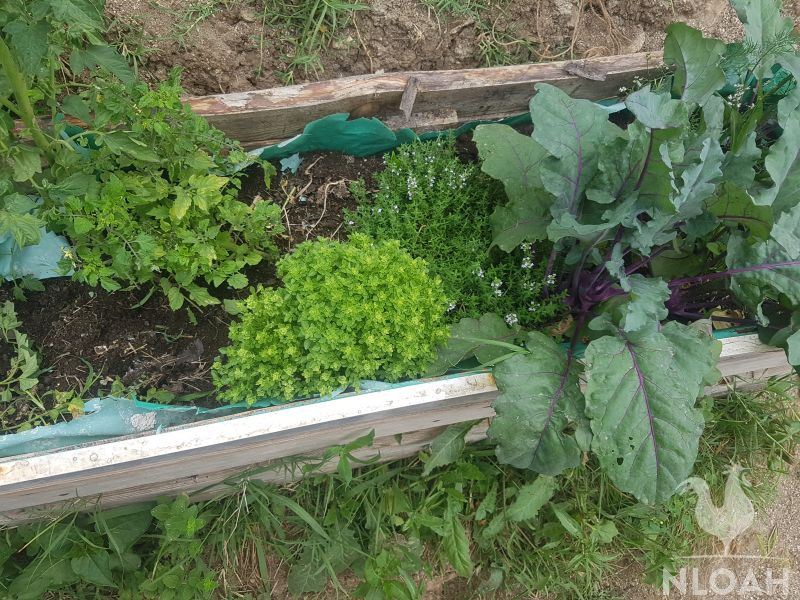
9. Planters
If you only have the space the size of a balcony, then you will most likely be creating a plant pot food forest.
Plant pots can be expensive. Instead have a look around grocery store and industrial garbage’s, you will find all kinds of containers you can modify to put your plants in.
A great source is the nursery garbage because they discard many valuable containers that they receive the seedlings in. These are great for starting your vegetables and, hey, free!
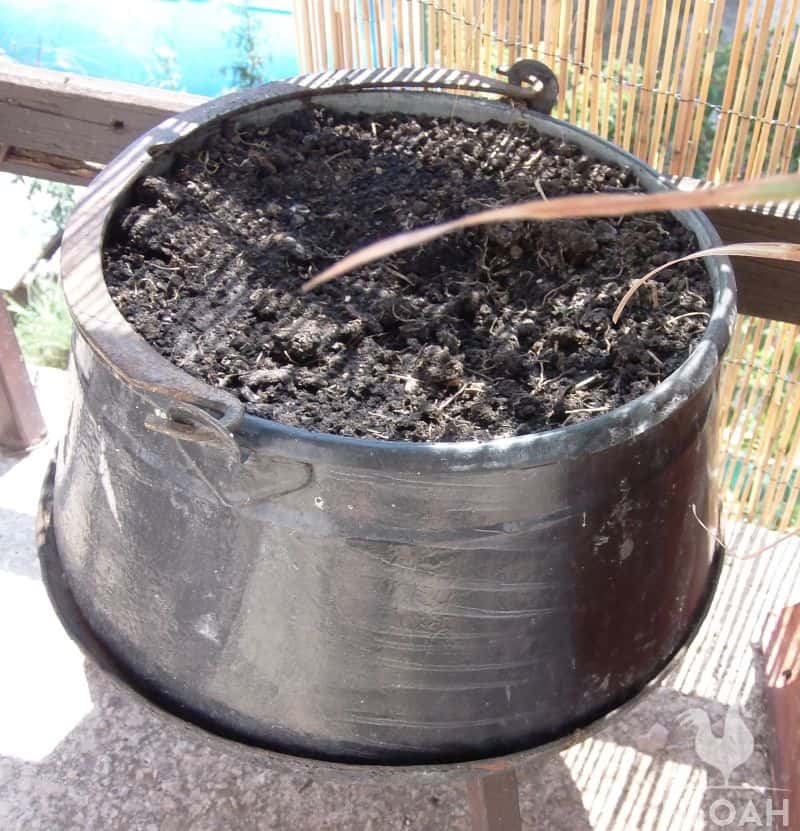
10. Water
Probably one of the most important requirement for growing your own food. You might be paying a flat rate for water or on a meter, doesn’t matter. We all have to think of not only money saving, but environment saving as well.
For this reason you must catch and save your rain water, it’s a gift. You can do this by directing the flow off your roof into barrels or tanks. If you’re in an apartment, have a look where the water runs off the roof of your building, and ask if you can put some kind of container to catch the rain water.
If your project is a large one, then you will want to use swales and ponds to catch and store your rain water.
11. Recycle and Re-purpose
Turn what you might normally throw away into something useful. You can turn an old pot or sink into a planter. You can use old plastic bottles for seedlings or wicking containers.
No need to throw any organic materials away, return them to the soil. Think before you dispose of anything, what other use it might be good for.
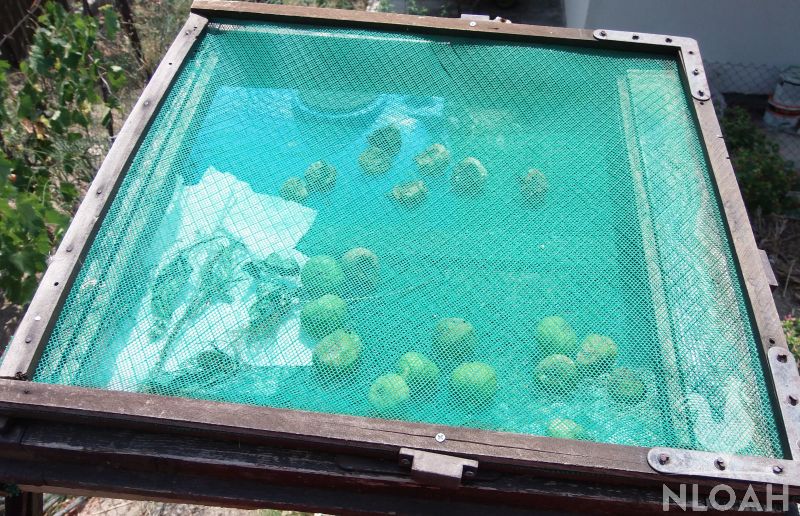
12. Water
Reuse your grey water to water you plants. As long as you have not used bleach your grey water is just as effective as fresh water for your plants, sometimes it is even better.
You can save your shower water by standing in any type of container, then use it for washing your floors and after that to water your plants. That water bill will get smaller. You are doing the entire planet a favor.
13. Electricity
Use trees and bushes strategically planted to provide shade for your house or apartment. Figure out how to achieve good airflow to use the breeze to cool your dwelling. This way we don’t have to rely on air-conditioning to cool off, nature will do this sustainably.
14. Insulate properly…
…to reduce the need of unsustainable heating resource like electricity, and fossil fuel. You can also use passive solar to capture the heat of the sun.
15. Engage Your Community
The more we come together and help each-other, the easier our work and cost load is going to be. Many hands make for easy work.
There are also community based programs in many countries where permaculture people will come together for a project all for free. It’s a great tool for learning and social engagement. These are referred to as a permablitz Lots of fun! Here is a link to show you what its all about.
16. Exchange Talents
You might be a good carpenter or plumber, but not so good at growing vegetables. Help a friend or neighbor build something in exchange for their help in teaching you how to grow better. No need to pay if you can exchange what you’re good at for what you are not.
17. Lend a Helping Hand
Taking exchange talents a step further, always be prepared to lend a helping hand, without the need for anything in return. By conducting ourselves this way we motivate others to respond in kind.
Honest heartfelt assistance is infectious, and a great tonic for the soul. What positive things you put forward will always be returned in different form.
Final Words
I have now given some valid points to consider on how to save money or use none at all. Take this a step further and monitor you’re spending now. Start to introduce some of the concepts above into your life and compare how much you are saving. This is a great reward in itself.
Practice the 12 principles of permaculture, you will find many examples of them in the lists above. It is mostly just common sense.
It’s great if you can afford to spend the money in hiring a permaculture designer along with the landscape contractors to design and build your permaculture garden. You can purchase the best soils and buy all mature trees and shrubs and hire a permaculturist or gardener to maintain it.
This is a super way to quickly reap the benefits of producing your own food. We must always keep in mind the word sustainability. If you’re outsourcing most of the things you need, are you really sustainable?
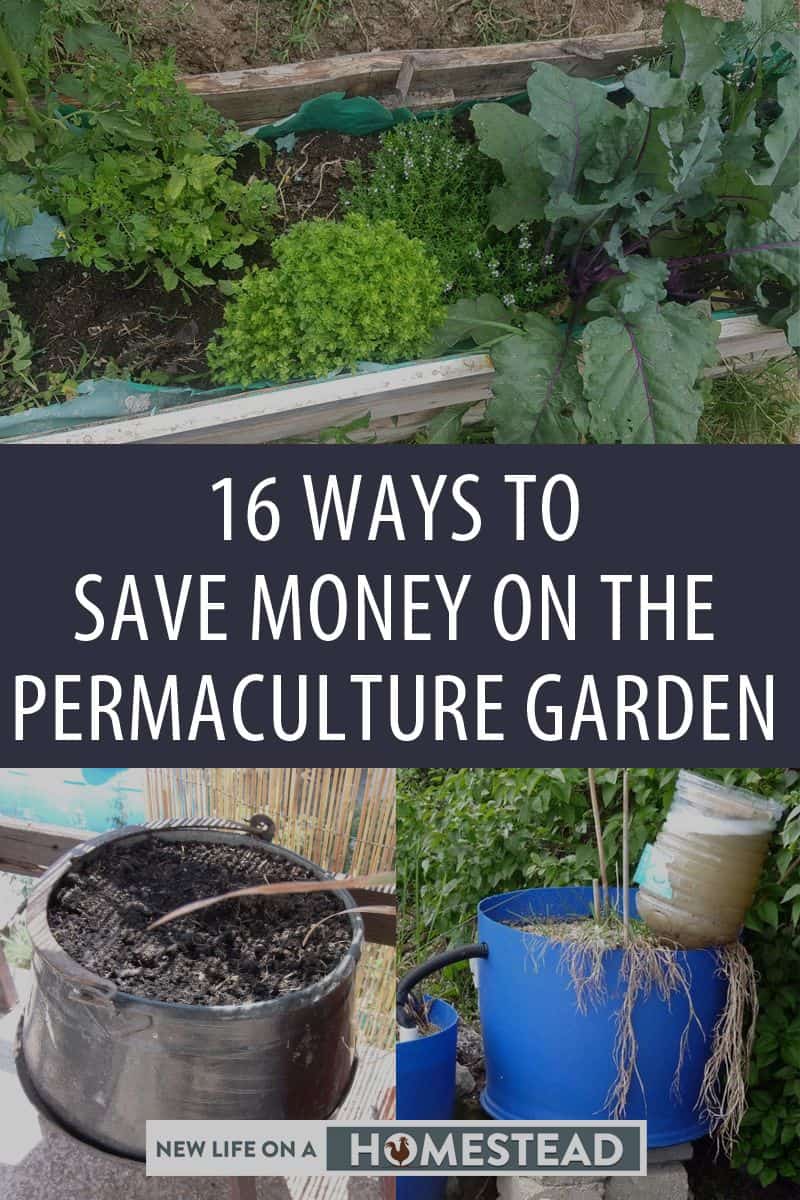

Dirk is Canadian permaculture designer with a certificate from Tagari farms, studying under the tutelage of the legends and founders of permaculture Bill Mollison and Geoff Lawton. Dirk has been doing permaculture for more than 20 years, initiating and managing projects in Cambodia, Madagascar, Montenegro, and Vietnam. He’s been helping people use permaculture techniques in growing their own food, and in leading more sustainable lives across the world.

I like many of the articles on this website but quite agree that this article is very weak.
Water is listed as both #10 and #12, which shows that no one really gave it an editorial look before posting it. That was a mistake.
I also really dislike it when people write without having experience in that which they are writing. Reading and regurgitating what you read doesn’t cut it. This author is clearly, CLEARLY not an experienced permaculturist, or even someone experienced with perennials. Like I said, I do like and respect many of the articles on this website, but this article needs a complete rework.
For my fellow frustrated seekers, I can suggest this.
Regarding guilds: Permaculture principle #1 is to observe and interact. I have found the strongest guilds to be ones you also see in nature. An example of this would be any of the brambles, burdock, and nettles, which are always found together in the wild in the U.K. You might look for apple trees in the wild and see what is typically growing with or near them. Beyond that, think about the “layers” and also about the services you wish to provide, for example, usually you want a nitrogen fixer in the guild. For a fruit tree, you might also want something that attracts bees. You will want things that like the same kind of pH more or less, so you wouldn’t usually put blueberry under apple. If you are zone 4a, you obviously need things that will survive your winters, so most of the guilds you see working in other areas would need to be adjusted anyway. Sometimes you can use a guild to correct a problem… for example, put a water hungry plant to soak up too much moisture for a plant that doesn’t like to have wet feet. Guilds can help prevent loss of investment in your trees by giving them support. And finally, I highly suggest seeing if there is a regional permaculture group for your area, where you can discuss guilds with people in similar conditions.
Regarding trees and bushes on the cheap: look up coppicing and pollarding. Also look up air grafting and other ways to graft. Personally, I purchase some trees, particularly ones that I want in dwarf form like apples and cherry trees, but I also ask other gardeners, often, for what they have because usually I can get something from them, like they might let me dig up some extra elderberry they have or this spring I have a friend who has blackberry bushes so I’m going to go take some cuttings. By sourcing what I can for free, I can use the rest of the budget for trees that are best grafted to a root stock.
i did see a random article somewhere recently from a permaculturist in Canada, who was talking about the trees and fruit he could grow, as opposed to what we often grow in the lower 48. If I find it again I will backtrack and leave the link here… but know they do exist. I hope you see this reply, Michael, and good luck!
I like many of the articles on this website but quite agree that this article is very weak.
Water is listed as both #10 and #12, which shows that no one really gave it an editorial look before posting it. That was a mistake.
I also really dislike it when people write without having experience in that which they are writing. Reading and regurgitating what you read doesn’t cut it. This author is clearly, CLEARLY not an experienced permaculturist, or even someone experienced with perennials. Like I said, I do like and respect many of the articles on this website, but this article needs a complete rework.
For my fellow frustrated seekers, I can suggest this.
Regarding guilds: Permaculture principle #1 is to observe and interact. I have found the strongest guilds to be ones you also see in nature. An example of this would be any of the brambles, burdock, and nettles, which are always found together in the wild in the U.K. You might look for apple trees in the wild and see what is typically growing with or near them. Beyond that, think about the “layers” and also about the services you wish to provide, for example, usually you want a nitrogen fixer in the guild. For a fruit tree, you might also want something that attracts bees. You will want things that like the same kind of pH more or less, so you wouldn’t usually put blueberry under apple. If you are zone 4a, you obviously need things that will survive your winters, so most of the guilds you see working in other areas would need to be adjusted anyway. Sometimes you can use a guild to correct a problem… for example, put a water hungry plant to soak up too much moisture for a plant that doesn’t like to have wet feet. Guilds can help prevent loss of investment in your trees by giving them support. And finally, I highly suggest seeing if there is a regional permaculture group for your area, where you can discuss guilds with people in similar conditions.
Regarding trees and bushes on the cheap: look up coppicing and pollarding. Also look up air grafting and other ways to graft. Personally, I purchase some trees, particularly ones that I want in dwarf form like apples and cherry trees, but I also ask other gardeners, often, for what they have because usually I can get something from them, like they might let me dig up some extra elderberry they have or this spring I have a friend who has blackberry bushes so I’m going to go take some cuttings. By sourcing what I can for free, I can use the rest of the budget for trees that are best grafted to a root stock.
i did see a random article somewhere recently from a permaculturist in Canada, who was talking about the trees and fruit he could grow, as opposed to what we often grow in the lower 48. If I find it again I will backtrack and leave the link here… but know they do exist. I hope you see this reply, Michael, and good luck!
You make a lot of great points but #17 is probably one of the best! You will eventually reap what you sow. Giving without wanting anything in return is one of the most precious commodities we can ever have.
(God Bless stay safe)
Do you think two dollars a month is enough to get rid of the ads and sustain the website? You’re underestimating the content costs, but if you’re willing to share the knowledge, I’d be happy to have you write for NLOAH. 🙂